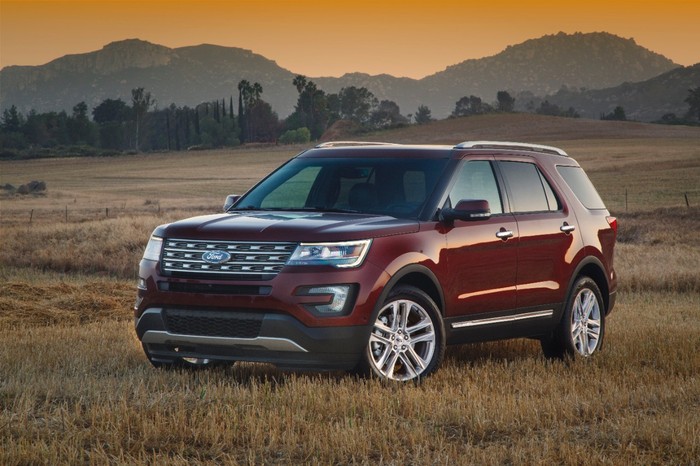
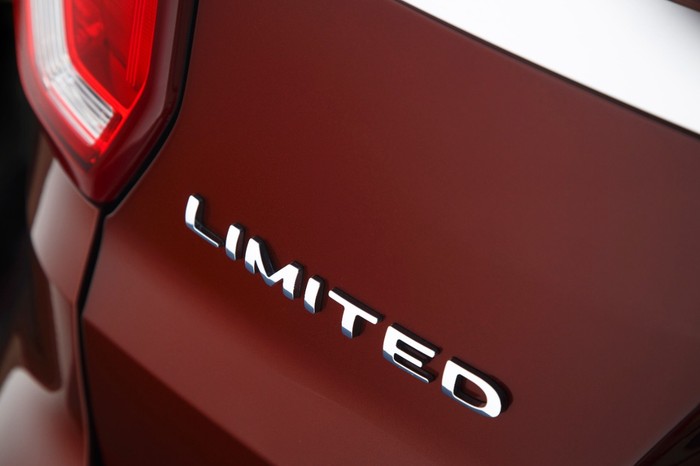
2019 Ford Explorer
The best-selling SUV in North America in years past, the Ford Explorer's primary strength used to be its rugged reputation. Yet by the early 21st century, as buyers began to shy away from body-on-frame SUVs for more-efficient and better-driving crossovers, the Explorer became an also-ran in the sales race. The latest Explorer seeks to keep up with consumer tastes and reclaim some of its former sales glory with a unibody platform that provides car-like handling and increased fuel economy.
Modern interpretation of the SUV
The Explorer rides on a unibody platform derived from the automaker's D3 architecture rather than the separate frame of the outgoing model. Substantially updated since the platform first debuted, it now underpins the Taurus, Flex and the Lincoln MKS in addition to the Explorer.With a road-oriented fully independent suspension and Ford's optional "intelligent" four-wheel-drive system, the Explorer isn't likely to challenge the body-on-frame Toyota 4Runner or unibody Jeep Grand Cherokee for off road prowess. Instead, V6 Explorers can be equipped with a terrain management control knob based on former Ford subsidiary Land Rover's similar system.
Offering snow, sand, mud and normal modes, the system simply requires a twist of a knob to properly set up the Explorer's all-wheel-drive and stability control systems for various types of terrain. The system also includes a hill descent mode for low-speed off road maneuvers.
Technical specifications
The Explorer's base engine is a 3.5-liter V6 that delivers 290 horsepower and 255 pound-feet of torque. The V6 can be had in both front (18/25 mpg) and all-wheel-drive (17/23 mpg) form.
Buyers also have the option of paying extra for an EcoBoost 2.3-liter turbocharged four-cylinder engine. It combines a turbocharger, direct injection and four valves per cylinder to deliver 280 horsepower at 5,600 rpm and 310 lb-ft of torque at 3,000 rpm. Fuel economy is rated at 19 mpg in city and 28 mpg on the highway for front-wheel-drive models and 18 mpg city and 26 on the highway for four-wheel-drive models.
For those who place a priority on power should check out the Sport or the Platinum model, which both pack a 3.5-liter V6. Ford pegs its output at 365 horsepower and 350 pound-feet of torque.
All engines shift through a six-speed automatic transmission.
Inside and out
With a length of 197.1 inches and a width of 90.2 inches including the exterior mirrors, the latest Explorer is a fair amount larger than the outgoing model - and it's one of the largest in its class, measuring in just three inches shorter than a GMC Acadia.
It boasts a much more streamlined look than before, although the canted C-pillar seen in the original two-door Explorer returns. Part of the Explorer's signature look, it also adds rigidity to the SUV's body structure.
The cabin features space for seven passengers spread across three rows of seating. The third row is best suited to children, however, and cargo space
All Explorers except for the base model come standard with SYNC, Ford's Bluetooth-based connectivity system that allows smartphone users to place calls and stream music by using voice commands or steering wheel-mounted buttons. It can also read incoming texts aloud to help the driver keep his or her eyes on the road, and allows the use of Ford-approved apps like The Wall Street Journal news and Pandora radio.
The Explorer can be spec'd with MyFord Touch, an infotainment system that builds on SYNC by letting users control everything from navigation to climate control to the sound system with voice commands. MyFord Touch also replaces conventional sound system knobs and buttons with a center-mounted eight-inch touchscreen, dual 4.2-inch displays in the instrument cluster and touch-sensitive controls in the center stack. Many consumers report that the system is a "love it or hate it" item, so those interested in the Explorer are advised to try before they buy.
Standard and optional features
Ford offers the Explorer in four configurations, starting with the base model, equipped with a 4.2-inch LCD screen to display vehicle information, cruise control, power windows and locks, A/C, a six-speaker AM/FM/CD stereo with an AUX input, and a tilt and telescope steering column. Auto on/off headlights are newly standard for the latest model year.
To those features, the XLT adds a leather-wrapped steering wheel, heated mirrors with LED turn signals, a keyless entry keypad, rear parking sensors, an alarm system, SYNC and 18-inch alloy wheels.
The XLT can be optioned up with the 201A Equipment Group, which brings dual-zone automatic climate control, a nine-speaker sound system, a rearview camera, an auto-dimming rearview mirror, MyFord Touch, expanded SYNC functionality, an additional USB port, an SD card reader and audio/video inputs. There's also the 202A Equipment Group, which builds on those features with leather upholstery and power-adjustable, heated front seats.
The Limited includes a 12-speaker Sony audio system with HD radio, power folding side mirrors, ambient lighting, power adjustable pedals, automatic climate control, a power driver's seat, an auto-dimming interior mirror, 20-inch wheels. a rear-view camera, remote start and keyless access with push-button start.
The Limited can be spec'd with the 301A Equipment Group, which ups the ante with a navigation system, ventilated front seats, a power liftgate, power-folding third row seats, a heated steering wheel and a power adjustable passenger's seat. The 303A Equipment Group includes those features plus a 3.51:1 rear axle (non-limited-slip).
Next up is the Explorer Sport, with V6 power and a faster steering. Also setting the Sport apart from its less powerful siblings and signaling its more powerful motor are a number of stygian aesthetic upgrades. These include blacked-out headlamps and tail lamps, a black lower front fascia with a functional air intake and a sterling grey mesh grille with contrasting black bars. Black trim is also applied to the roof rack, side mirrors and liftgate, while unique painted and machined 20-inch alloy wheels complete the look.
Above the Sport is the Platinum trim, which comes standard with everything found in a loaded Limited model along with Ford's 4WD with Terrain Management. The Platinum also comes with a Satin Chrome grille and unique 20” wheels in "Tarnished Dark” finish.
Occupant safety
All Explorers are fitted with dual front, front side and full-length side curtain airbags in addition to traction and stability control systems and a tire-pressure monitoring system.
Key competitors
Alternatives to the Explorer in the three-row crossover segment are numerous and include the Volkswagen Atlas, Honda Pilot, Chevrolet Traverse, Toyota Highlander, and Dodge Durango.
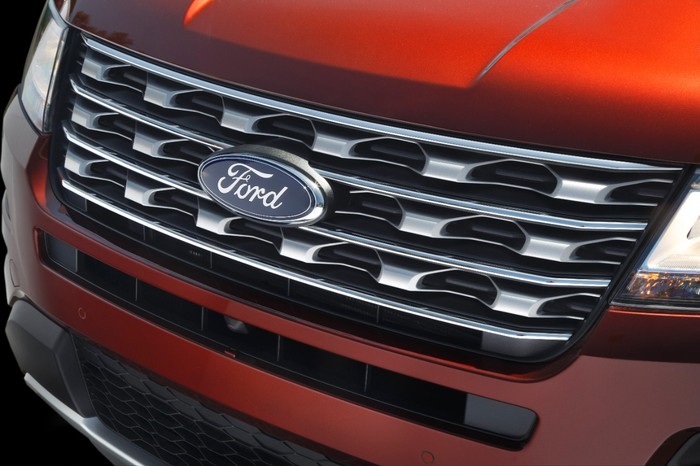
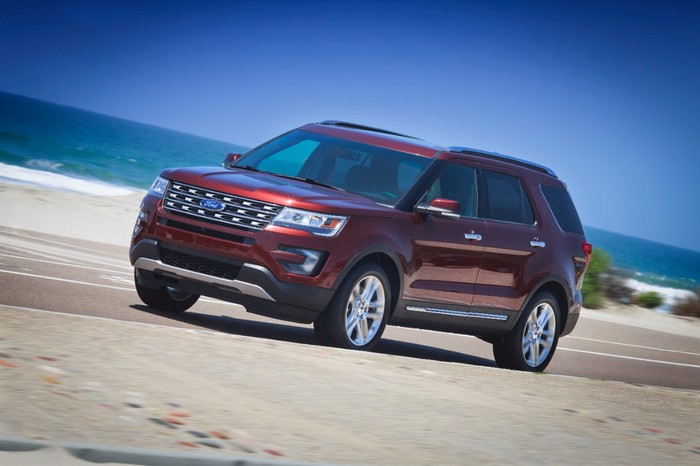
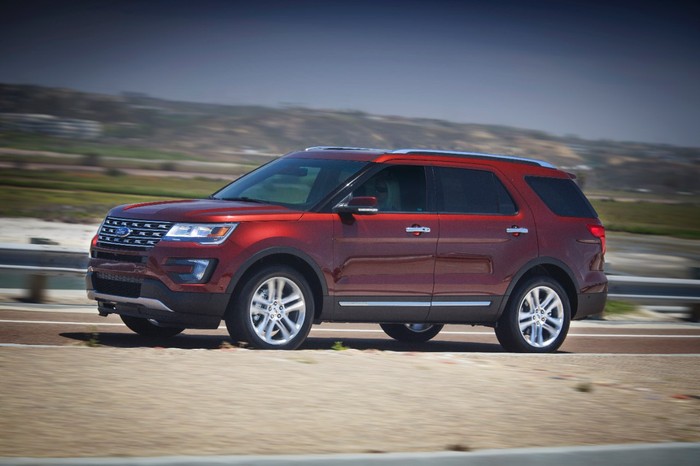
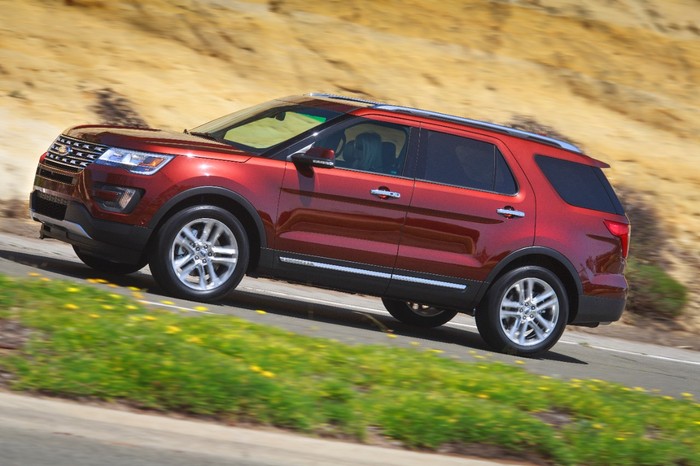
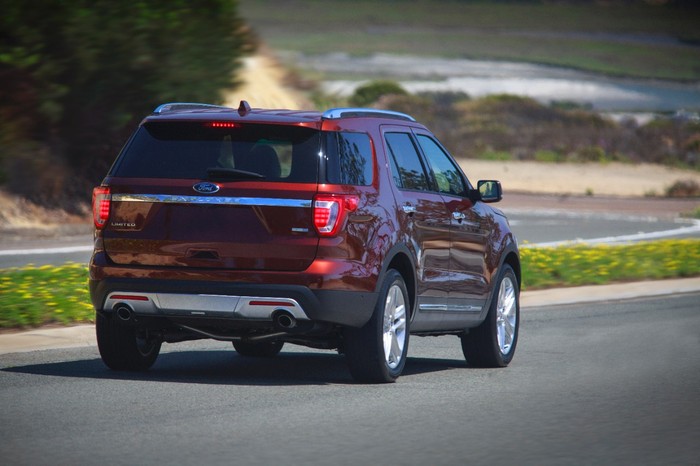
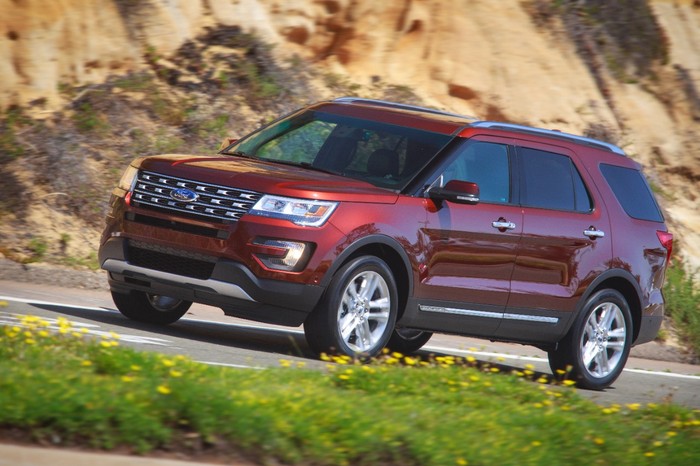

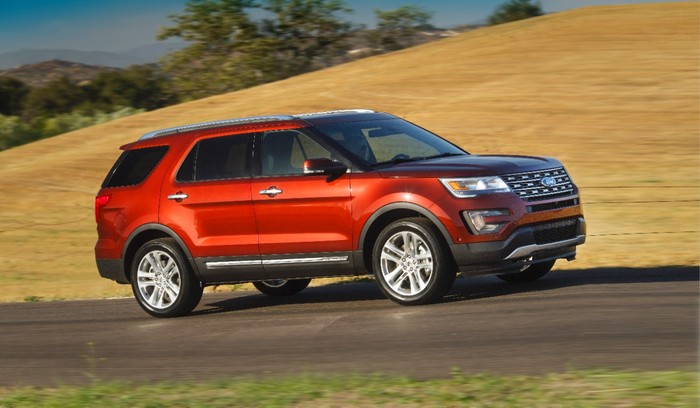
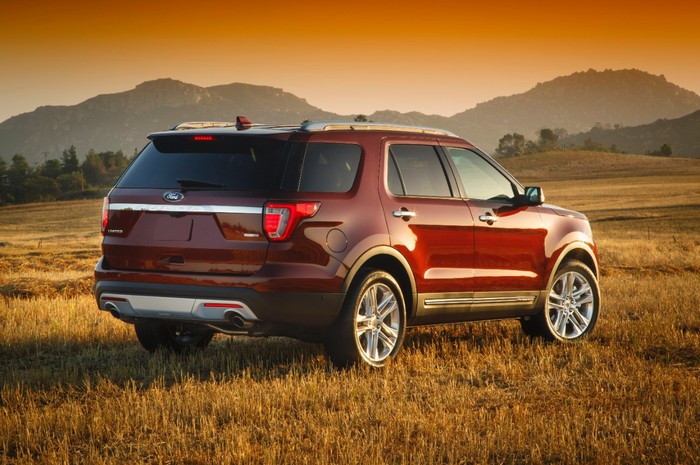
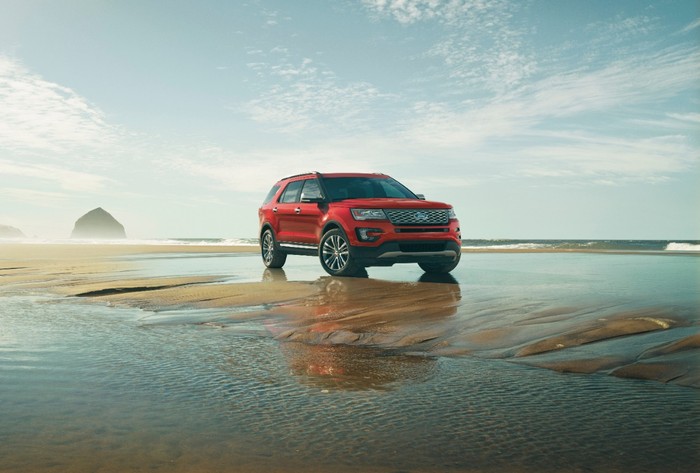
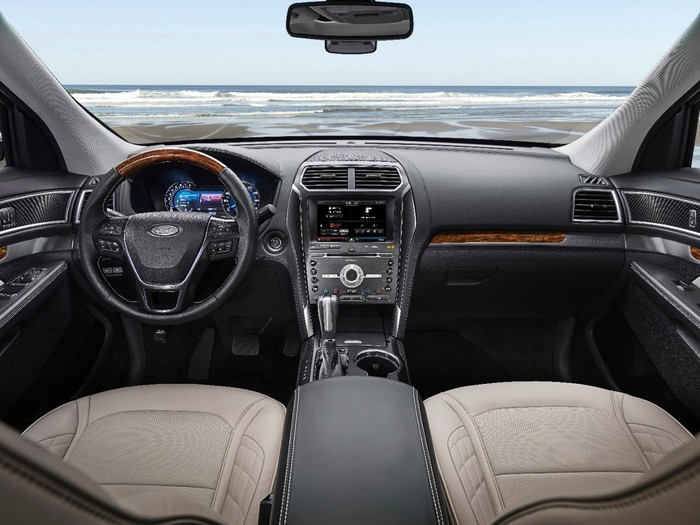
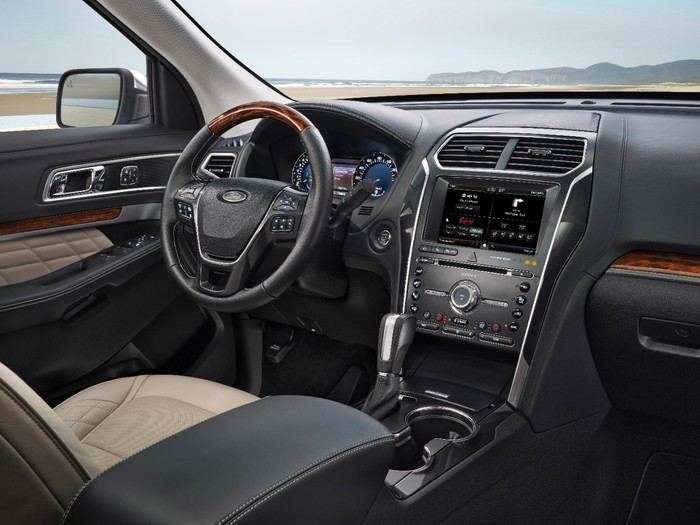
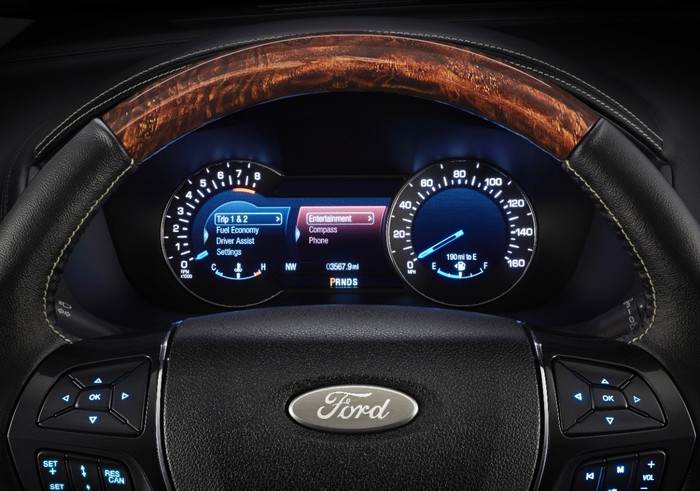
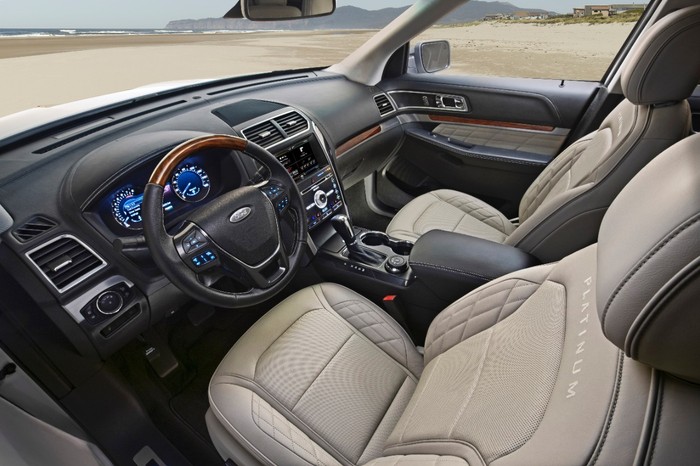
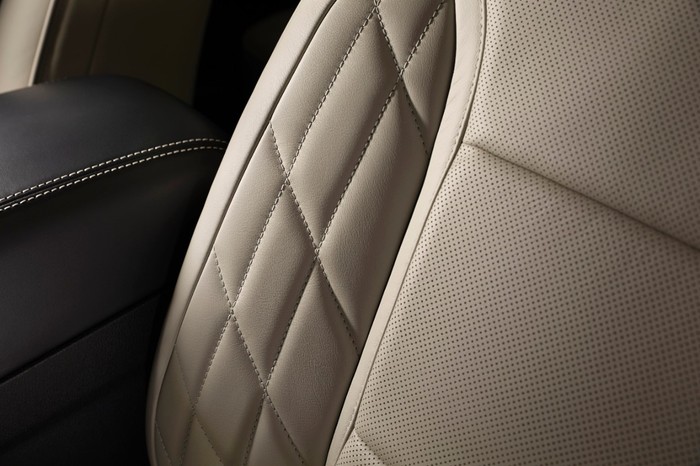
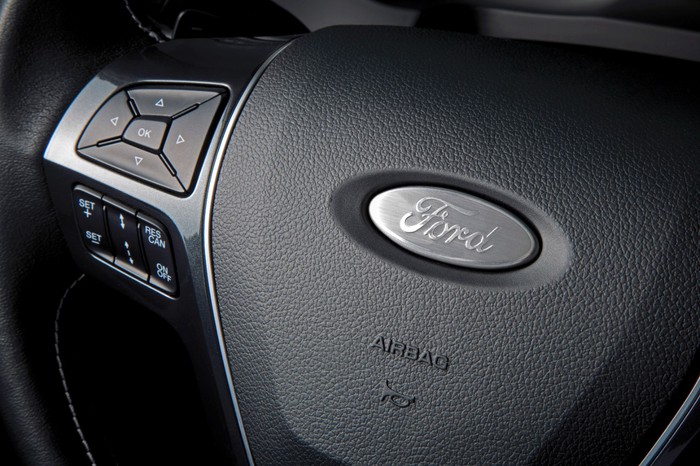
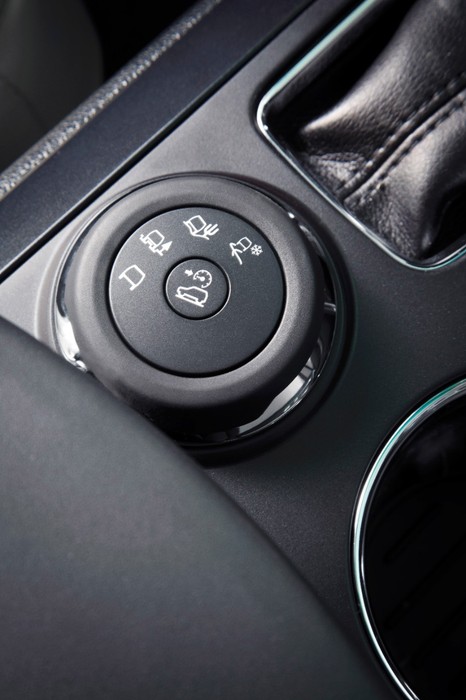
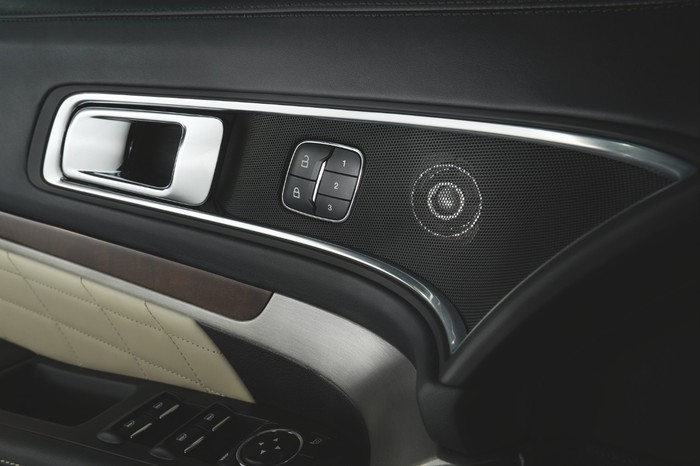
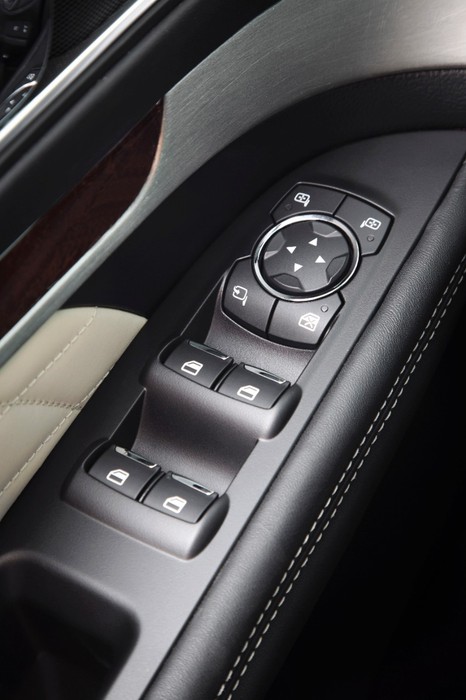
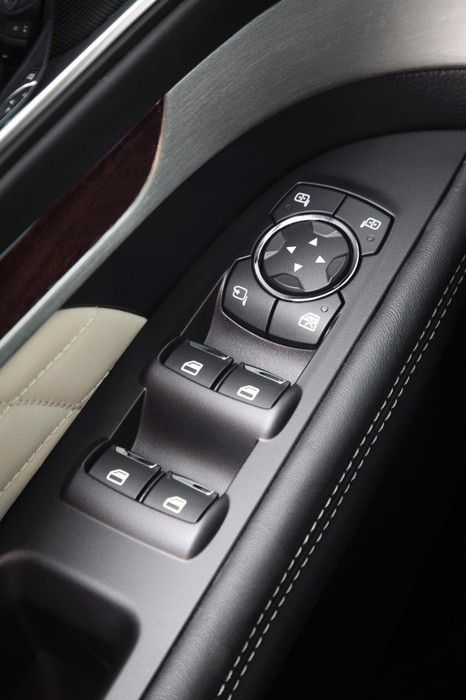

- Propulsion: Gas 3.5L V6
- Power: 290hp
@
6500rpm - Torque: 255ft⋅lb
@
4000rpm - Mileage: 20 MPG ( 17 city, 24 hwy)
- Transmission: 6-speed Automatic
- Seating: 7 seats
in
3 rows - Passenger Volume: 151.7cu ft
- Length: 198.3in
- Wheelbase: 112.8in
- Height: 70.0in
- Weight: 4443lbs
- Cargo Volume: 21.0cu ft
- Front Leg Room: 42.9in
- Front Head Room: 41.4in
- Front Hip Room: 57.3in
- Second Row Leg Room: 39.5in
- Second Row Head Room: 40.6in
- Second Row Hip Room: 56.8in
- Third Row Leg Room: 32.0in
- Third Row Head Room: 37.8in
- Third Row Hip Room: 40.7in
- Drag Coefficient: TBD
- Drag Coefficient: TBD